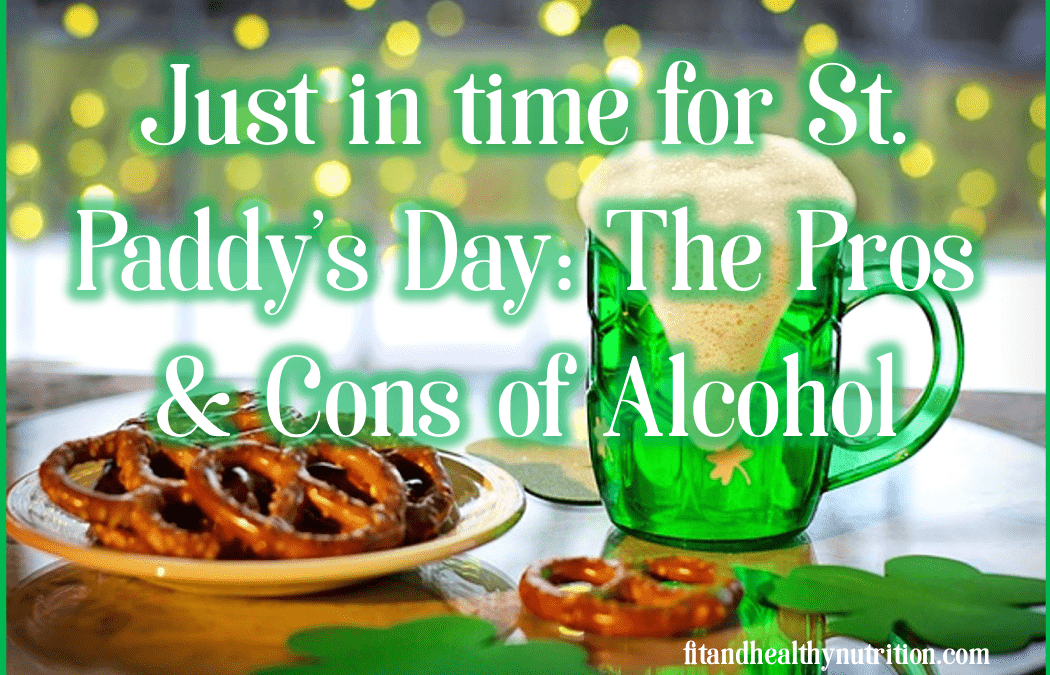Say hello to March. You know… the month of March Madness, St Paddy’s Day and most
importantly National Nutrition Month (it’s a thing!)! It’s a festive month to be sure. But what
people get most excited about this time of year is St. Paddy’s day. The national holiday makes
me think of corn beef, wearing green and getting drruuunnnnkkk. Not that I party on St.
Paddy’s day any more (see me circa late 1990s), but I know that is what some people are up to,
for better or for worse. So, that got me thinking about talking about the good and bad about
alcohol.
Let me get straight to the pros as I know that most of my friends’ who read this newsletter are
likely to stop reading after this section (ha!). Any positive results of drinking occur specifically
when you drink in moderation, especially if your drink of choice is red wine. Red wine contains
powerful antioxidants. These antioxidants can raise your “good” cholesterol: your HDL. Red
wine can also thin your blood, which is great if you have thicker arteries. Overall, red wine,
drank in moderation, can lower your risk for a heart attack. Who wouldn’t want to raise a glass
to that?
On the flip side, drinking past moderation can greatly increase your risk of cancers, especially
breast, colorectal, liver and laryngeal. When you drink in excess you cause chronic
inflammation and DNA damage. Excess drinking can also quicken dementia and be an
independent risk factor for dementia regardless of your genes. This means even if you didn’t
have a risk of dementia based on your genes, you can drink yourself into dementia. Excessive
alcohol can also increase your risk of obesity and increase your risk of malnutrition.
Now let’s talk about what I mean when I say ‘moderation’. If you’re male, it’s 2 drinks per day
and if you are female, it’s 1 drink per day. What if you are a man-sized female? Still only one
drink per day. Women metabolize alcohol differently not based on size, but on gender.
Therefore, extra weight will not protect you if you are female.
What happens if despite all this new-found knowledge, you still end up hungover the morning
after St. Paddy’s? There are some foods that can help you. First, reach for some water. You
need to rehydrate yourself. Second, look for high electrolyte containing foods, specifically
sodium, potassium and magnesium. This would be a good time to reach for a banana, have a
salad, have some soup/crackers or drink some coconut water. Last, but not least, eat some
protein, especially eggs. Alcohol can get in the way of some amino acid absorption, hence the
protein. Eggs help your body produce an antioxidant which will help breakdown the by-
products of alcohol. So, basically reserve a spot at your favorite brunch spot for the day after,
but hold off on the green mimosas!

